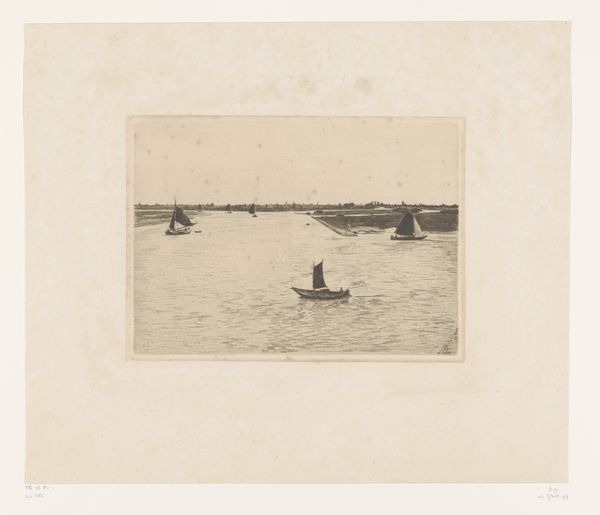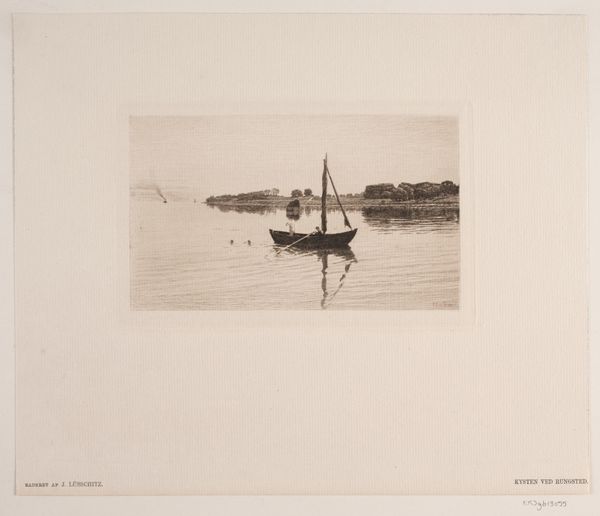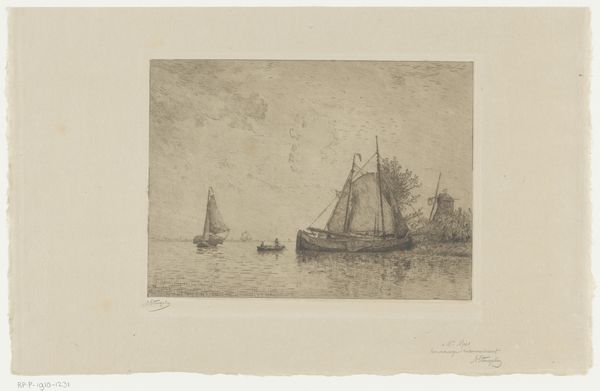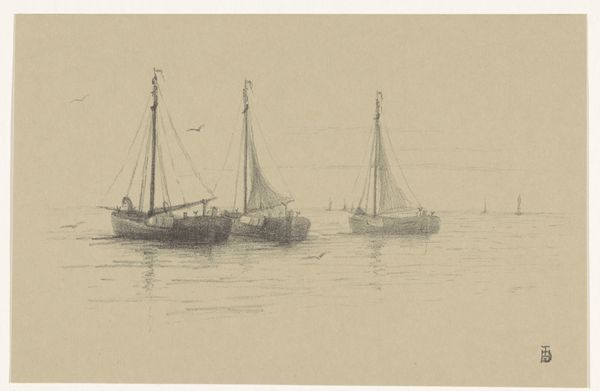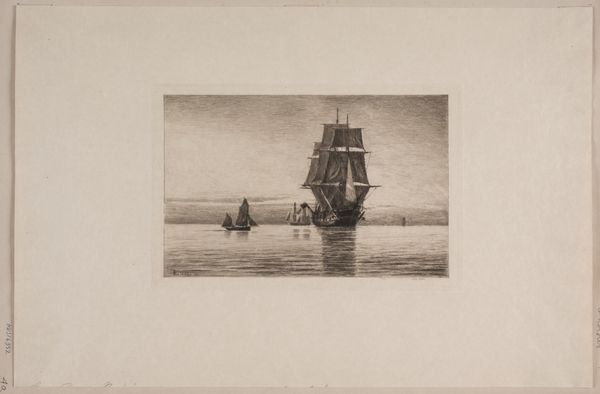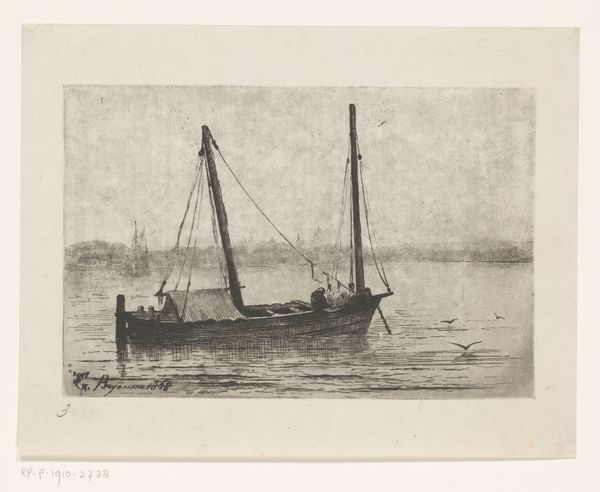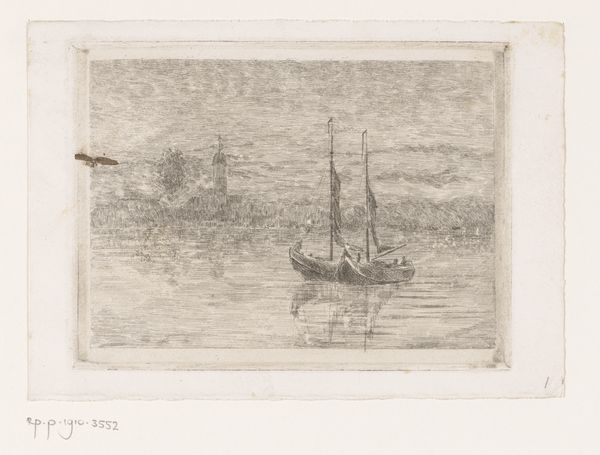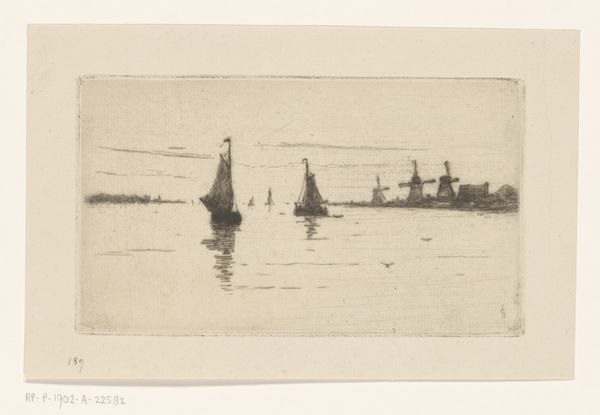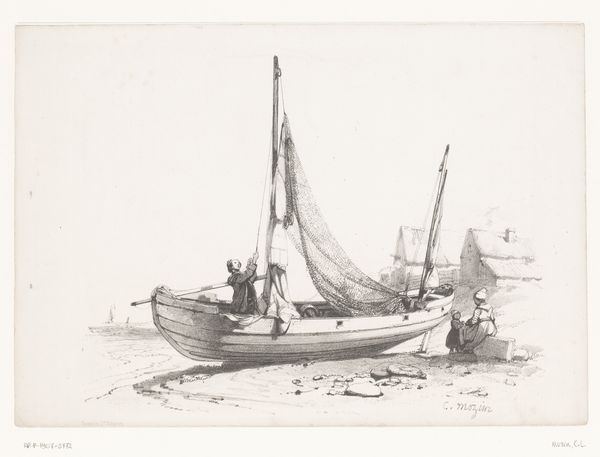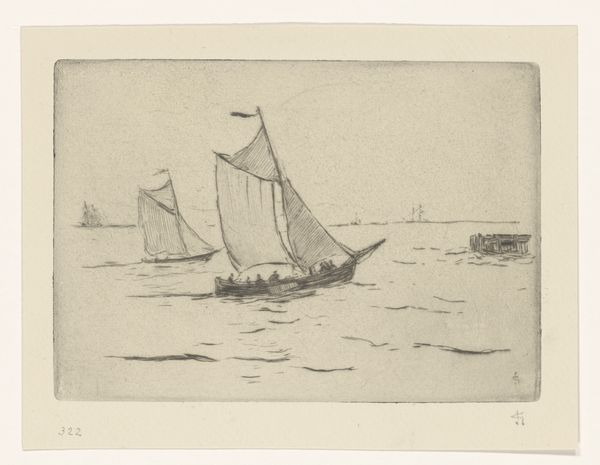
Dimensions: height 127 mm, width 194 mm
Copyright: Rijks Museum: Open Domain
Editor: So, this is "Twee boten op het water," or "Two Boats on the Water," an etching by Henri Rul, made sometime between 1872 and 1913. The scene feels really quiet, almost desolate. What stands out to you about it? Curator: It's interesting how Rul captures this sense of stillness. For me, this image speaks to the socioeconomic realities of the fishing communities of that era. The boats, rendered with such delicate lines, weren’t just objects; they were tools of labor, and those laborers are noticeably absent. What narratives are suggested by the emptiness of the boats? Editor: That's a perspective I hadn't considered. I was just focusing on the aesthetic qualities, the muted tones, and the reflections on the water. So, you see this more as a social commentary rather than simply a landscape? Curator: Absolutely. The landscape itself is not neutral; it is a space of labor, struggle, and survival. We have to ask ourselves who is allowed to depict these realities and for what audience. What stories do these visual choices tell? Editor: I see your point. By focusing on the tools, the boats, instead of the people, it indirectly highlights their absence, their potential hardship. The boats aren’t romanticized; they're just…there. Curator: Precisely. And the print medium itself allows for a wider distribution of this perspective, engaging a broader audience in considering these issues. How does knowing that it's a print impact your interpretation? Editor: Well, that does change things. Prints make art more accessible and make statements to broader communities. It makes the artist seem even more intentioned about the artwork having a message. Curator: Exactly. Considering the piece through the lens of social activism truly enriches our understanding. Editor: This has been such an enlightening discussion; I never thought of looking at it that way. Curator: And that's the power of art: It invites constant reevaluation.
Comments
No comments
Be the first to comment and join the conversation on the ultimate creative platform.

